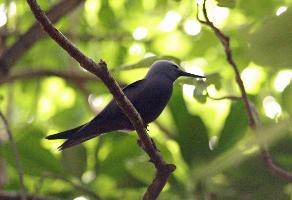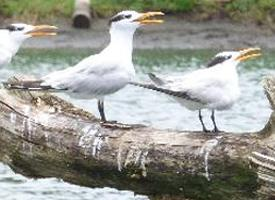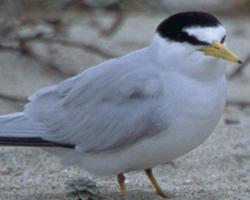
Description de l'animal
The Lesser Noddy (Anous tenuirostris) is a fascinating species of seabird that belongs to the tern family Laridae. With its distinct appearance and unique behaviors, this bird is a subject of interest for birdwatchers and ornithologists alike. The Lesser Noddy is primarily found in the Indian Ocean and parts of the Pacific, thriving in tropical and subtropical regions.One of the most striking features of the Lesser Noddy is its appearance. It has a slender body that is predominantly sooty-grey in color, with a slightly paler grey or white on the crown and forehead, which contrasts beautifully with its dark surroundings. Its wings are long and pointed, enabling it to glide effortlessly over the ocean surface. The tail is wedge-shaped, contributing to its streamlined silhouette. A distinctive characteristic is its bill, which is thin and pointed, perfectly adapted for catching fish and squid from the sea. The eyes are dark and beady, set against the lighter color of its face, giving it a keen gaze.
Lesser Noddies are medium-sized birds, with a body length ranging from 30 to 35 cm (about 12 to 14 inches) and a wingspan that can extend up to 70 cm (approximately 28 inches). Despite their modest size, these birds are robust and adept at surviving in their marine environment.
The habitat of the Lesser Noddy is closely tied to tropical and subtropical oceans. They are pelagic outside the breeding season, which means they spend most of their life flying over the open sea, rarely coming to land except to breed. Their nesting sites are usually located on isolated islands, where they form colonies. These birds have a strong preference for islands with dense vegetation, where they can build their nests in trees or shrubs, a behavior that distinguishes them from many other tern species that nest on the ground.
The diet of the Lesser Noddy consists mainly of fish and squid, which they catch by skimming the ocean surface or by making shallow dives. Their feeding strategy involves flying low over the water to spot prey before swiftly snatching it with their sharp beaks.
Breeding season is a critical time for Lesser Noddies, and it is during this period that their social behavior is most evident. They are monogamous birds, forming long-term pair bonds. The breeding cycle starts with an elaborate courtship display, involving synchronized flying and mutual preening. Once a pair is formed, they work together to build a nest, which is a simple structure made of leaves and twigs, placed in the fork of a tree or bush. The female typically lays one egg, which both parents incubate. After hatching, both parents are involved in feeding and protecting the chick until it is ready to fledge.
Despite facing threats such as habitat destruction and climate change, the Lesser Noddy has managed to maintain stable populations in many parts of its range. However, like many seabird species, it remains vulnerable to changes in its marine environment, making conservation efforts crucial for its long-term survival.
In conclusion, the Lesser Noddy is a remarkable bird with unique characteristics that make it stand out among seabirds. Its adaptation to life at sea, intricate social behaviors, and the challenges it faces in its natural habitat make it a compelling subject for study and conservation efforts.
Animaux similaires
Nouvelles photos d'animaux
Top 10 des animaux
- Dolphin gull (Leucophaeus scoresbii)
- Diana monkey (Cercopithecus diana)
- Moustached guenon (Cercopithecus cephus)
- Galápagos tortoise (Geochelone nigra complex)
- Japanese macaque (Macaca fuscata)
- Stone loach (Barbatula barbatula)
- Russian tortoise (Testudo horsfieldii)
- Greek tortoise (Testudo graeca)
- Common flying dragon (Draco volans)
- Vendace (Coregonus albula)


